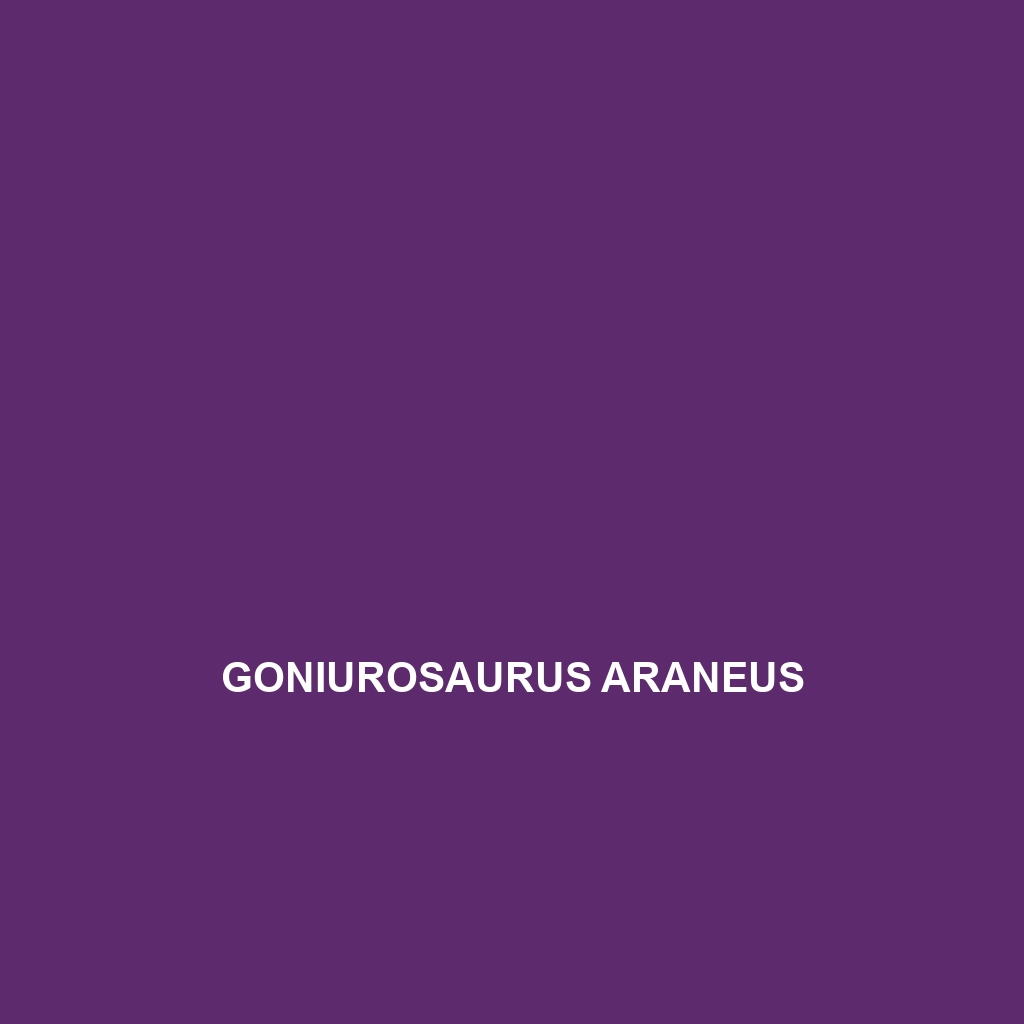Common Name
Goniurosaurus araneus
Scientific Name
Goniurosaurus araneus
Habitat
Goniurosaurus araneus, commonly known as the spider gecko, is predominantly found in the humid tropical rainforests of Southeast Asia, particularly in Vietnam. This species thrives in environments characterized by high humidity and consistently warm temperatures, making it well-adapted to the dense foliage and rich biodiversity of its natural habitat. The gecko is often located in shaded areas, near leaf litter and rocks, where it can find shelter from predators and harsh sun exposure. Additionally, the surrounding rainforest not only serves as a home but also provides an abundance of insects and other small invertebrates that constitute its primary food source.
Physical Characteristics
Measuring between 15 to 20 centimeters long, Goniurosaurus araneus displays distinctive physical features that set it apart from other gecko species. Its body is relatively stout, with a broad head and large, striking eyes that provide excellent night vision. The skin is covered with granular scales and exhibits a unique pattern of colorations—ranging from gray to brown—often with darker spots or stripes that enhance its camouflage against the forest floor. One of the unique adaptations of this species is its ability to change its color slightly depending on the temperature or humidity, enabling it to blend into its environment more effectively.
Behavior
Goniurosaurus araneus exhibits primarily nocturnal behavior, making it most active during the night when it hunts for food. This gecko is known for its solitary nature; individuals are often found alone except during mating seasons. The spider gecko employs a variety of social interactions, primarily involving communication through visual cues and body movements. During the mating season, elaborate courtship rituals are displayed, which include intricate head bobbing and showing off bright colors to attract potential mates. Additionally, these geckos are adept climbers, utilizing their sharp claws to navigate the vertical landscape of their rainforest homes.
Diet
The diet of Goniurosaurus araneus consists mainly of a wide variety of insects, making it an insectivore. This gecko preys on crickets, beetles, and other small invertebrates, which it hunts at night using its keen eyesight. Its hunting technique involves a stealthy approach followed by a quick ambush. Occasionally, it may also consume small fruits or plant matter, but the majority of its diet remains animal-based, which categorizes it as a carnivore. The ability to utilize both ground and arboreal hunting tactics allows this species to exploit diverse food resources within its habitat.
Reproduction
The reproductive cycle of Goniurosaurus araneus typically occurs once per year, coinciding with the rainy season when food availability is at its peak. Mating rituals are intricate and can include elaborate displays and vocalizations. After a gestation period of approximately one month, females lay 2 to 4 eggs, which they bury in moist soil or leaf litter to provide protection against predators. The eggs incubate for about 60 to 90 days, after which young geckos emerge fully formed and ready to fend for themselves. Parental care is minimal, as the young are left to grow independently.
Conservation Status
According to the International Union for Conservation of Nature (IUCN), Goniurosaurus araneus is currently classified as vulnerable, primarily due to habitat loss resulting from deforestation and land conversion for agriculture. Despite this classification, more extensive surveys are needed to accurately assess population trends and establish conservation measures. Conservation efforts are underway in areas where this species is endemic, but challenges remain, particularly concerning habitat preservation and illegal wildlife trade.
Interesting Facts
One fascinating aspect of Goniurosaurus araneus is its unique ability to regenerate its tail—a common trait among many lizard species. However, this gecko notably utilizes this adaptation as a defense mechanism, allowing it to escape predators. Additionally, its vibrant color patterns and robust physique make it a subject of interest among reptile enthusiasts and herpetologists. This gecko’s behavior, particularly its nocturnal foraging and social interactions, also contributes to its intrigue in the reptile community.
